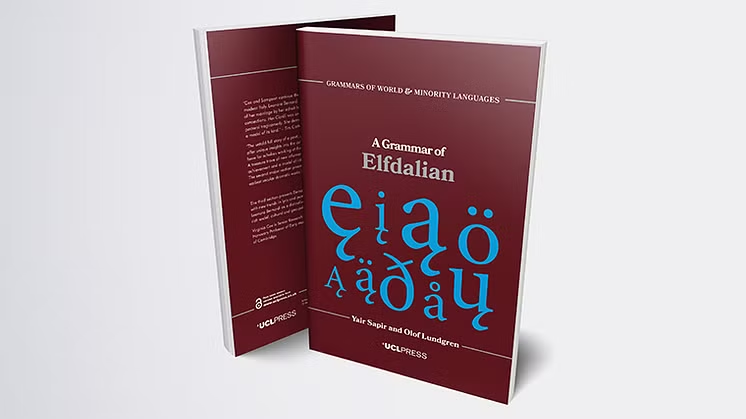Mini-Seminars & Journal Club
These seminars, by invitation only, are fora for in-depth discussions on selected subjects within the scope of the Center for the Human Past interest areas.
2025
Mini-Seminar
Graves & Grammar.
Interdisciplinary approaches to changes in material culture, burial practice and language in Upper Dalarna 500-750 CE
21 May 2025
Speakers:
Yair Sapir, PhD of Scandinavian Languages, Senior Lecturer of Swedish, Kristianstad University
Joakim Wehlin, Senior Lecturer/Associate Professor, Archaeology, Uppsala University

Summary
Journal Club
23 Apr 2025
Two papers, presented by Carina Schlebusch and Luciana Simões, to discuss:
Cesar A. Fortes-Lima, Mame Y. Diallo, Václav Janoušek, Viktor Černý, Carina M. Schlebusch. (2025). Population history and admixture of the Fulani people from the Sahel, The American Journal of Human Genetics, Volume 112, Issue 2, 2025, Pages 261-275. https://doi.org/10.1016/j.ajhg.2024.12.015
Simões, L.G., Günther, T., Martínez-Sánchez, R.M. et al. (2023). Northwest African Neolithic initiated by migrants from Iberia and Levant. Nature618, 550–556. https://doi.org/10.1038/s41586-023-06166-6
Journal Club
09 Apr 2025
Yediay, F.E., Kroonen, G., Sabatini, S., et al. (preprint) Ancient genomics support deep divergence between Eastern and Western Mediterranean Indo-European languages. doi: https://doi.org/10.1101/2024.12.02.626332
Journal Club
26 Feb 2025
Lazaridis, I., Patterson, N., Anthony, D. et al. The genetic origin of the Indo-Europeans. Nature 639, 132–142 (2025). https://doi.org/10.1038/s41586-024-08531-5
2024
Mini-seminars & Journal Club discussions in 2024
Mini-Seminar
Baltic kinship terms in Finno-Ugric, Indo-European kinship terms and their family structure
Speakers & discussion moderators: Yoko Yamazaki & Axel Palmér, Human Past SCAS Fellows (2024-25).
27 Nov 2024

Summary
On one hand, they enable us to formulate several hypotheses as to how the family structure and marriage practice of the donor language are reflected in the recipient language. On the other hand, ancient demographic investigation could test those hypotheses, leading to a more concrete reconstruction of their contact situation.
Journal Club
23 Oct 2024
McColl, H., Kroonen, G., Moreno-Mayar, J. V., Valeur Seersholm, F., Scorrano, G., Pinotti, T., … & Willerslev, E. (2024). Steppe Ancestry in western Eurasia and the spread of the Germanic Languages. bioRxiv, 2024-03. doi: https://doi.org/10.1101/2024.03.13.584607
Mini-Seminar
Blinded by the light –
Bifacial points and human mobility in Västerbotten, Sweden
Speaker: Mattias Sjölander, CHP postdoctoral researcher, Archaeology, Ancient History and Cultural Heritage, UU
16 Oct 2024

Summary
Arguments have been made that the North Swedish groups mainly utilized the raw material sources present in the mountain region, producing preforms that are then brought to the forest settlements where they are finished. There is a lack of provenance studies based on quartz and quartzite material, however, partly owing to the ubiquitous distribution of the material in the landscape. This makes it difficult to establish a link between the potential sources and the artefacts. In a recent PhD project at Umeå University an interdisciplinary approach incorporating exploratory spectroscopic and spatial analysis was used in the study of bifacial points from Västerbotten County. Reliable characterization of the raw material is necessary in order to understand human mobility related to raw material extraction and use. There are a number of confounding factors related to the material and artefact type, however, including chronology, data availability, instrumentation and excavation context.
Towards the end of the Neolithic period significant cultural change seems to occur among the hunter-gatherer communities of northern Fennoscandia. In Sweden the hunter-gatherer communities seemingly abandon a long tradition of a more sedentary settlement system based around the semi-subterranean dwellings, and instead adopt a more mobile pattern. This occurs alongside other significant changes in the material culture, as well as in their symbolic imagery. A technology that appears to be reintroduced to northern Fennoscandia around this time is the bifacial point (arrow- and spearheads). These are largely made from locally sourced materials like quartz and quartzite (in some areas also flint).
Mini-Seminar
Archaeolinguistic perspectives on the Proto-Indo-Iranian homeland
Speaker: Axel Palmér, Human Past SCAS Junior Fellow (2024-25)
25 Sept 2024

